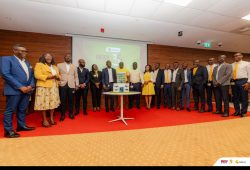In every workplace – from the buzzing startup to the sprawling multinational – managers face a common, often frustrating challenge: people. Why do some employees leap into action while others linger in deliberation?
Why does one team member thrive in group brainstorming sessions while another retreats into silence? Why do communication breakdowns happen – even when everyone seems to be on the same page?
Too often, differences in behaviour and personality are misinterpreted as incompetence or resistance. Managers label certain employees as ‘difficult’, ‘slow’ or ‘uncooperative’, when in fact they’re simply different. As Thomas Erikson boldly states in his best-selling book Surrounded by Idiots, the root of many organisational struggles is not a lack of intelligence but lack of understanding.
Erikson’s engaging breakdown of human behaviour through the DISC personality model -represented by four colour-coded types: Red, Yellow, Green and Blue – offers a transformative lens through which to view workplace dynamics.
More than just a communication tool, this model presents a strategic advantage: the ability to manage diverse personality types not only to minimise conflict but also unleash untapped potential.
This article explores how organisational leaders can leverage Erikson’s insights to create more harmonious, productive environments. It makes the case that every individual, regardless of their perceived weaknesses, holds a well of strengths that can be harnessed – if only we’re willing to understand how they work.
Because the truth is simple: people are not problems to be solved, they are potential waiting to be unlocked.
People Are Not Idiots – They’re Simply Different
It’s an easy trap to fall into. A team project stalls, an email is misread, a meeting goes off the rails – and frustration sets in. “Why can’t they just get it?” a manager might think. “It’s common sense!” But as Thomas Erikson bluntly and refreshingly puts it, the issue isn’t that we’re surrounded by idiots – it’s that we’re surrounded by differences.
The truth is what seems like resistance or incompetence is often a matter of misalignment. Different people process information, make decisions and respond to challenges in fundamentally different ways. And it’s not because they’re trying to be difficult – it’s because their brains are wired to operate on different frequencies.
Imagine judging a fish by how well it climbs a tree. That’s exactly what happens when leaders expect uniform behaviour from a diverse workforce. The more productive path lies in understanding: in recognising that every employee brings their own lens to the workplace, shaped by their personality, values and preferred ways of interacting with the world.
This idea might seem obvious in theory, but in practice it requires a significant shift in mindset. It calls for managers to drop the need to mould everyone into a single ideal and instead become interpreters of human behaviour – translators who can identify value beneath the surface of what may appear, at first glance, as a challenge.
For example, a meticulous team member who seems slow to act might be operating from a place of deep analysis – trying to ensure accuracy before making a move. A colleague who seems too eager or scattered may actually be a wellspring of creative energy waiting for the right channel.
Recognising that people are not ‘wrong’, just different, is the first step toward building a culture where everyone has a place – and a purpose. And it lays the groundwork for leveraging each personality type to fuel innovation, accountability and growth.
Because when we stop trying to change people into versions of ourselves, we begin to unlock the unique strengths they already possess.
The Four Behavioural Types: A Blueprint for Understanding Human Nature
At the heart of Thomas Erikson’s Surrounded by Idiots is a deceptively simple yet profoundly useful framework: the DISC personality model. Using four colours – Red, Yellow, Green and Blue – Erikson paints a vivid picture of the main behavioural archetypes that shape how people interact, communicate and respond to their environment.
Understanding these types is like acquiring a map for human behaviour. It doesn’t just help leaders avoid conflict – it equips them to anticipate reactions, align roles to strengths and communicate in ways that actually resonate.
Red: The Dominant Driver
Reds are bold, assertive and laser-focused on outcomes. They want action, results and efficiency – and they want them now. You’ll find Reds leading the charge on tight deadlines, pushing teams to the finish line and demanding high performance. But their direct style can sometimes come off as blunt or even abrasive to more sensitive colleagues.
In the right role, Reds are powerhouses of productivity. They are natural leaders in crisis situations, initiators of change and champions of big-picture goals. The key is managing their intensity without dampening their drive – helping them pair ambition with empathy.
Yellow: The Influential Optimist
If Reds are the engines, Yellows are the spark. Energetic, enthusiastic and endlessly creative, Yellows thrive on interaction and possibility.
They bring life to meetings, brainstorming and team dynamics. Their optimism is contagious and their ability to inspire can turn even mundane tasks into collaborative adventures.
However, Yellows may struggle with follow-through or organisation, often preferring the excitement of ideas over the discipline of execution. They shine when given room to innovate and when paired with team members who can transform their energy into action.
Green: The Steady Stabiliser
Greens are the glue of any team. Patient, loyal and dependable, they prioritise harmony and relationships. They are the colleagues who listen without judgment, offer quiet support and keep the team grounded when things get turbulent.
But Greens are also resistant to change and may avoid confrontation at all costs. This can lead to bottlenecks in decision-making or unspoken tensions. Yet their gift lies in emotional intelligence and consistency – traits that are essential for building a cohesive organisational culture.
Blue: The Analytical Perfectionist
Blues are the meticulous planners, the fact-checkers, the quality-control experts. Logical and detail-oriented, they bring rigour to processes and demand clarity in communication. They ask questions others overlook and ensure that work meets the highest standards.
Their caution and thoroughness, however, can sometimes slow down progress or lead to over-analysis. Blues thrive when given autonomy, structure and clear expectations – and when managers value their need for time and precision, rather than rush them into premature action.
These four types aren’t meant to box people in but to offer a framework for understanding. Most people are a blend of traits, but everyone has a dominant colour that shapes their behaviour.
When leaders learn to recognise these patterns, they stop managing generically – and start leading strategically. And it’s in this strategic understanding that the real magic happens.
Adapt Your Communication Style: Speaking Their Language to Get Results
In leadership, communication isn’t just about what you say – it’s about how you say it, to whom and when. One of the most transformational insights from Surrounded by Idiots is that effective communication doesn’t begin with your message – it begins with your audience.
Too often, managers adopt a one-size-fits-all communication style, unaware that their approach may alienate or confuse others. A commanding tone might energise one employee but intimidate another. A casual conversation might put one team member at ease but leave another craving structure.
That’s where adapting to personality types becomes not just helpful but essential.
Thomas Erikson emphasises that once we understand someone’s dominant behavioural type, we can tailor our communication in ways that reduce friction and increase clarity. Instead of shouting louder, we simply learn to change the channel.
Communicating with Reds
If you’re speaking to a Red, get to the point. These individuals thrive on action, results and speed. Long-winded explanations or emotional appeals will test their patience. Instead, focus on goals, outcomes and efficiency. Respect their time. Present solutions, not problems.
“Here’s what needs to happen and here’s how we’ll do it.” That’s music to a Red’s ears.
Communicating with Yellows
Yellows love energy, excitement and possibilities. Engage them with enthusiasm, recognise their ideas and don’t shy away from humour or storytelling. Yellows respond best to open, dynamic dialogue – not rigid structures.
If you want to inspire a Yellow, paint a vision. Show how their input makes a difference, and give them room to express themselves.
Communicating with Greens
Greens prefer a softer approach. They value kindness, patience and emotional safety. Abruptness or conflict makes them retreat. When communicating with Greens, build rapport first. Ask questions, listen actively and give them time to process decisions.
They need to feel secure before they commit – so push gently, not forcefully.
Communicating with Blues
Precision is everything for Blues. If you make bold claims without backing them up, they’ll disengage. Blues want facts, data and logical reasoning. Stick to the point, but don’t skip details. Avoid ambiguity and allow them time to analyse before responding.
Don’t pressure them for snap decisions – they’re not being difficult, they’re being thorough.
Adapting communication isn’t about manipulation – it’s about empathy. It’s about valuing people enough to meet them where they are. When managers take the time to speak each personality’s ‘language’, they foster trust, reduce misunderstandings and make people feel seen.
And when people feel seen, they stop resisting and start engaging.
Self-Awareness is the Starting Point: You Can’t Lead Others Until You Understand Yourself
Before a manager can effectively lead others, they must first look inward. In Surrounded by Idiots, Thomas Erikson underscores a truth that many leaders overlook: self-awareness isn’t just a nice-to-have trait – it’s a leadership imperative.
Understanding the personality types of others is powerful. But understanding your own type? That’s transformative.
Why? Because your communication style, decision-making process, emotional triggers and even the way you manage conflict are all filtered through your own behavioural lens. Without awareness of this lens, it’s easy to assume that your way is the right way – or worse, the only way. This assumption is what drives miscommunication, resentment and disengagement.
The Mirror Before the Map
Leaders who lack self-awareness often fall into predictable traps. A dominant Red leader might bulldoze over quieter voices, not out of malice but because they believe speed equals effectiveness. A meticulous Blue might stifle progress by obsessing over details, blind to the impatience growing around them.
On the other hand, leaders who understand their dominant personality colour can spot their own patterns in real time. They begin to ask reflective questions:
- Am I dominating this conversation?
- Am I overwhelming my team with too many ideas and not enough clarity?
- Am I avoiding difficult conversations to preserve harmony?
- Am I overanalysing this problem when a decision needs to be made?
That kind of self-check changes everything.
Conclusion:
In today’s diverse workplaces, managing different personality types is not just a leadership challenge – it’s a strategic opportunity.
As Thomas Erikson’s Surrounded by Idiots reveals, no one is difficult or ineffective simply because they are different. Instead, every personality type brings unique strengths and perspectives that, when recognised and harnessed, can propel an organisation to new heights.
The key to unlocking this potential lies in self-awareness, empathy and flexibility. Leaders who understand their own behavioural tendencies – and adapt their approach to meet others where they are- build stronger, more cohesive teams. They move beyond frustration and miscommunication, transforming diversity of thought and style into a powerful asset.
Ultimately, successful organisations don’t aim for uniformity; they celebrate difference. They cultivate cultures where every individual’s contribution is valued and every voice can be heard. By embracing this mindset, managers and organisational heads can tap into the full spectrum of human potential, turning personality differences from obstacles into engines of innovation and productivity.
In a world where collaboration is more important than ever, the wisdom of understanding others – and yourself – is the greatest leadership advantage of all.










